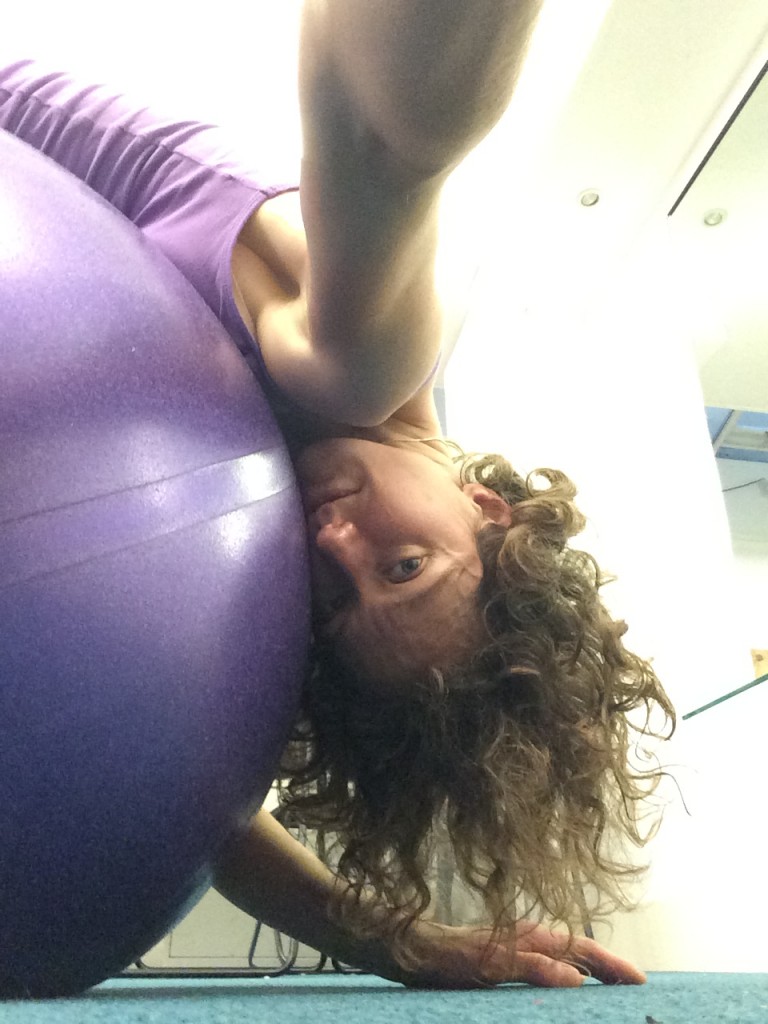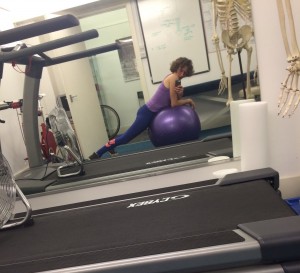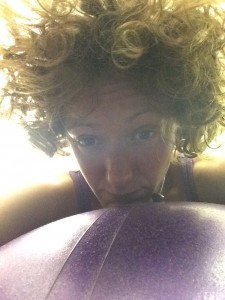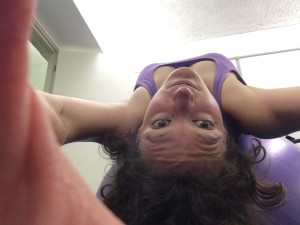Some people in fitness and sport get very sniffy about balls.

It’s a funny thing, but if you admit to training people with a Swiss Ball you are sniggered at, as if you don’t really know what ‘proper exercise’ is, and are resorting to this silly toy out of ignorance. I once attended a course run by a Strength and Conditioning organisation where the instructors openly mocked the use of the Swiss Balls for any exercise outside of ‘Rehab’. I had the gall to state quite openly that I used balls very effectively thank you very much, but would also like to learn more about how to properly and effectively use these bar bells too. Instantly this made me a pain in the arse. A pain in the arse who was going to ask questions and not just nod and grin and be in awe, which perhaps was the more expected response.
At lunchtime as we mingled one by one other participants gradually ‘came out’ to me. As it turned out some of them liked balls too, and used them often. They just didn’t feel able to say so in front of the slightly shouty instructor. (One of the two was very nice actually, and I respected him more for being less shouty. They just had a ‘good cop’/’bad cop’ thing going on).
Part of the problem with balls is that lots of people like to keep them in the rehab camp (if I may mix my metaphors, and I’m going to). They are bright and squidgy and sometimes soft and a little plyable. They are for the soft end of the exercise market. They are suitable for physios and therapists working with poor pallid injured people who need the kindness of their gentle curves.
Serious athletes on the other hand don’t need to f*** about with anything so ridiculous. No. Hard bodies need hard tools, preferably made of metal not plastic. Dumb bells, and even better bar bells, or Kettle bells. Some sort of bell that when you use it rings out “Look at me and my lump of metal”, “see how I move it, thrust it, swing it”, “I am strong, I am solid, I can break things”.
Well perhaps not surprisingly here is my first problem with this rather polarised approach to the use of the Swiss ball. I don’t believe REAL people belong in any one camp. However, I do find that a lot of REAL people start with at least one foot in the rehab/prehab camp, and need some tools that will transition them towards the more ‘hardened' end of the spectrum where some of them might like to be. What’s more some of them don’t even aspire to moving any kind of bell, but just want to be pain free, and energised and healthy going about their day to day life. I was most definitely was one of those people when I started to learn properly about exercise.
I am not naturally of a strong build, or what you might term ‘athletic’. I am not one of those trainers for whom part of their sales pitch is a chiselled, lean body that can perform epic feats of strength easily. But I am proud to say the body I have now at the age of 37 is probably functionally better than the body I had when I was 17. I am stronger, I have better posture, I am practically the same weight and I can do more with my body than I could then. I am very pleased about that. And a bright coloured plastic ball has had quite a lot to do with it.
One thing I say to clients in my coaching is that the people to watch are not those with the natural talent, but those who start out average and improve the most because of what they are doing. And most people I work with, to be honest, start out average. Here are some of the groups of people I mostly work who (with generosity of spirit) I put in this bracket:
• ‘Ordinary people’ for whom life just got busy and sometime in their 40’s or 50’s they realised that they have not consistently exercised since they were at school • ‘Ordinary people’ for whom a ‘wake up’ call comes in the form of an injury that forces them to look at this aspect of their lifestyle • Endurance athletes – usually cyclists/sometimes swimmers, who (aside from their sport) have not done any conditioning of any kind for many years. • Endurance athletes for whom a ‘wake up’ call comes in the form of an injury – usually incurred in some daily activity rather than during ‘training’– that forces them to look at the absence of conditioning.
Quite frankly, your average modern person is fairly out of shape in terms of what the human body is capable of. Most of the people in these groups above need to relearn how to move correctly. They need to learn how to breathe right and engage their core muscles. Sometimes they have to correct chronic shortness and tightness and poor posture at the same time. And often they need a re-introduction to exercise that makes them want to stay and learn more.
https://www.youtube.com/watch?v=yQPPuIR5-bo&feature=youtu.be
For me, this is where the soft colourful plastic ball comes in. I use balls as a handy stretching tool, to help people re-engage their core and learn to move better, and to build their confidence in that movement in order to introduce weighted exercise. Here are some reasons why a Swiss Ball is good for that.
• It moves in three dimensions, so that when used appropriately it stimulates the body's balance and reflexes, as well as stimulating metabolism, offering a BIG BANG of benefits • It encourages all the muscles of the body to work at once, helping to connect muscles in working ‘teams’ whilst avoiding overdevelopment of any muscles in isolation • It is very versatile in the right hands, and in conjunction with a fairly simple set of adjustable spinlock dumb bells can take a client from deconditioned to functionally effective in very little time, at home • It takes up very little space and can be used at home or outside, without the need for a gym • It is relatively unintimidating, but also fun to work with, helping to build confidence and develop positive feelings along with exercise.
Now, of course like any other fitness tool, Swiss balls or 'Stability balls' are sometimes misused and abused. They are not ideal for everyone, and they are not the only tool in the box. But they are definitely a friend of mine, and many others.



